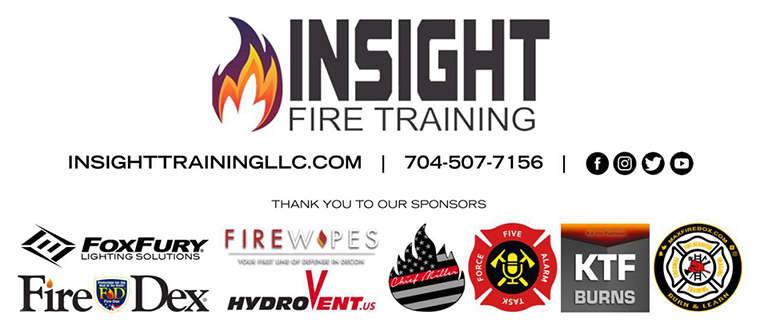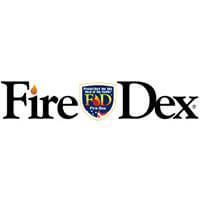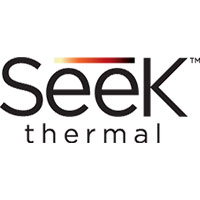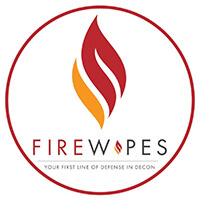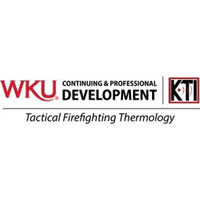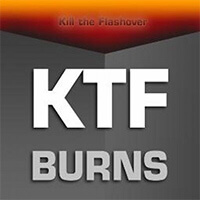The use of thermal imaging cameras has enhanced the firefighter’s overall effectiveness particularly in the area of searching for victims or downed firefighters. In the late 90’s several large and well-known fire departments were invited to participate in a study. They were given two identical search scenarios: one conducted without a TIC and one conducted with a TIC. The results were staggering. Without the use of a TIC the search crews missed the victims 60% of the time whereas they found the victim with the TIC while searching 99% of the time. In addition to this the total search time was greatly reduced. Firefighters today are facing environments with high heat release rate fuels, limited/zero visibility, and with less time to affect a rescue.
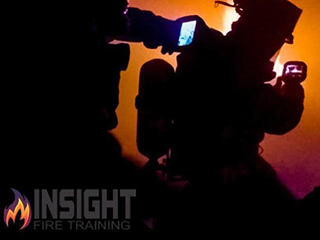
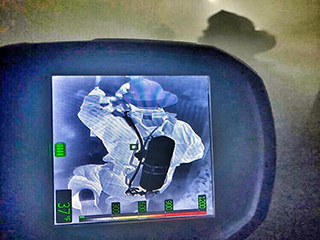
Firefighters today need to be ready and able to answer the following questions:• In many cases, fire attack crews locate the victims before the search crew does. What preparations, if any, have they made for such an incident?
- In rapid intervention rescue incidents, the victim is most often rescued by the interior crews operating closest to them and not the RIC or team. What preparations or training are crews receiving that will allow them to make a “rapid” intervention or rescue when they most likely will be low on air themselves?
- During rescue incidents (whether RIC or Victims), firefighting efforts must be reinforced, command and control is critical, and accountability is crucial to preventing another MAY-DAY Scenario. What training are firefighters receiving to prevent and prepare for such incidents?
Welcome to Enhanced Search Methodology! A course that bridges the gap between fundamental search concepts, empirical LODD data & victim rescues, and takes into account the actual conditions that firefighters will face during these challenging incidents. They are often chaotic, suffering from reduced staffing, and in many cases the same NIOSH recommendations rise again from the previous LODD reports to be placed yet again on another department who suffers such a tragic loss.
This course is offered in the following format for departments who have had thermal imaging training previously:
- Morning 2 hour Classroom Session.
- Mid-morning drills and live fire objective based training.
- Afternoon live fire objective based training.
- We can and will customize these programs to your host organizations particular needs.
Morning Lecture
This training will consist of an 8-hour course format will include morning lecture. This morning lecture will cover important information related to the participants in an experientially relevant way by experienced firefighters. Participants will learn statistically verifiable facts about civilian fire deaths and rescues, firefighter line of duty deaths and rapid intervention incidents, and learn the following:
- Ensure that the firefighter understands WHY
- Provide Empirical Data and not anecdotal data on search & RIC statistics
- Provide a better understanding on not merely search Methods but the adapting and improvising to the challenges of obstacles and the search environment, staying oriented, ROAM (rule of air management),
- Improving team work & proper communication
- Identifying critical cues in zero visibility or limited visibility environments.
- Case Studies of our fallen brothers and sisters: We will honor those who have paid the ultimate sacrifice and learn from them. We will not talk down or Monday morning quarterback another department’s tragedy and loss!
- Being Fundamentally Sound First: Basic Search Methods will be reinforced! We cannot improve a skill-set that we don’t possess.
- Provide multiple scenario based drills that assist in developing and honing the firefighters search and RIC skills * Provide videos, drills, and resources for firefighters to continue their learning after the course is complete.”
The morning lecture will cover types of Searches, Search crew format, Tools, patient packaging and removal, search safety and the incorporation of the Thermal Imaging Camera into your searches. We will discuss the why and how of searches. The course will answer the following questions: Why do we search in the first place, how can we make searches more efficient, more aggressive and safer (tactically aggressive). Why? Why do we search? What drives the operation, what are the factors that affect the decision to conduct a primary, right hand left hand, VEIS, etc.
Drill #1- Primary Search Drill
Given a defined area to be searched (Bay floor, bunk room, acquired structure, etc.) Students will conduct searches utilizing the techniques discussed earlier in the class, attention will be paid to the officer leading the search crew with the assistance of the thermal imaging camera. Upon locating any potential victim, crew leader will turn their camera off and direct the crews out of the building without the use of the thermal imaging camera, this will emphasize that technology fails and basic situational awareness remains important. Crews of no less than 2 and no more than 4 will be used during this scenario.
Drill #2-Primary Search with multiple victims:
Crews will be briefed on the scenario and staged in the following format. Fire attack crew, primary search crew, and on-deck crew. The fire attack crew will advance a line while suppressing the fire. They will encounter and have to remove a victim all while suppressing the fire. The primary search crew will start their search from the area of greatest thermal threat and work back and will encounter a victim. As they exit the structure, they will have to brief the on-deck crew of what they have or have not searched so the on-deck crew can complete the search. The on-deck crew will locate the third victim and remove them. The drill is then completed followed by an after action discussion of the scenario.
Drill #3-VEIS Drill
Given a defined search area and a defined access point, students will conduct a VEIS (vent, enter, isolate, search) drill to search for a probable victim inside. Students will begin by assessing the access point, determining tactic and equipment needs for access, ladder usage, ladder raises, tool selection etc. Students will then assess the opening through the TIC (Go/No Go). Students will move to the window and remove it (a window prop with drywall can be substituted for this part if operating without an acquired structure). Go/No Go decision will then be considered again prior to entry, students will identify the of the search any occupants are removed via the same window as the entry was made. Identification of flow path and scan the room looking for layout and the door. The student will then enter the room and proceed to the door while being guided by crew leader with the TIC. Upon completion of isolation, the search begins being led by the TIC. This drill will be conducted using 2 students at a time, 1 crew leader and 1 crew member.
Drill #4-RIC Drill
During this drill students, operating as a RIC will be deployed to locate and remove a firefighter with an unknown problem. A mayday will be called and a lunar report received, after that no
additional contact will be made with the downed member. We will utilize a mannequin or rescue dummy for this exercise if possible. RIC members will utilize the information from the lunar to determine method of search, initial equipment needs, and access point to begin the search. In the classroom, we will have discussed the look of a FF, hose, search ropes and other RIC specific issues through the eyes of a TIC, students will use those clues and tips combined with basic RIC and search techniques to locate the downed member, the crew leader will direct the crew with the TIC throughout the search, patient packaging and disentanglement as well as removal. This drill can take on many different forms and complexities based on the training ground provided. Almost any scenario can be simulated, from a collapse, lost member, or air emergency. During this scenario, we will operate in crews no smaller than 3, no larger than 4.
This course is offered from Insight Training LLC. Our instructors are Level I Thermography Certified and veteran members of the fire service. This course is available at the cost of $3,000 per day with the following requirements:
- 20 student maximum for the live fire portion of the training.
- Host organization must supply a live burn instructor, safety officer, and the training structure (burn building or acquired structure).
- All NFPA 1403 requirements shall be met.
- A classroom is required for the morning session.
- Lodging and travel expenses are not included in the cost of the program.
- Host organization shall provide SCBA’s for our instructors and a cascade system on site to fill bottles for the training.
- Three rescue mannequins or equivalent.
Insight Training LLC will provide the following:
- Two instructors, PPE, and 4-6 thermal imaging cameras
- Customized PowerPoint Program built specifically for the type(s) and models of thermal imaging cameras in use by the host organization.
- Student manual available in PDF format. The host organization is responsible for printing these prior to the event.
This training can be provided consecutively in a two or three day format in order to reach all members of the host organization on each shift.
For one day of training, the cost is $3,000 plus travel & lodging
For two days of training, the cost is $6,000 plus travel & lodging
For three days of training, the cost is $9,000 plus travel & lodging.
This course and associated costs are strictly limited to 20 students or less. If more than 20 students attend (with a maximum of 30 students per day), the host organization shall incur an additional $1,000 per day charge to maintain adequate student to instructor ratio.
A 20% deposit is required to secure the event. This deposit is non-refundable due to the COVID-19 pandemic, we cannot be held liable for non-refundable travel expenses. If the event is canceled due to emergent or COVID-19 restrictions, we will gladly reschedule the event at a later date.
Thank you for considering Insight Training LLC. The world’s leader in thermography firefighting certification and training.
